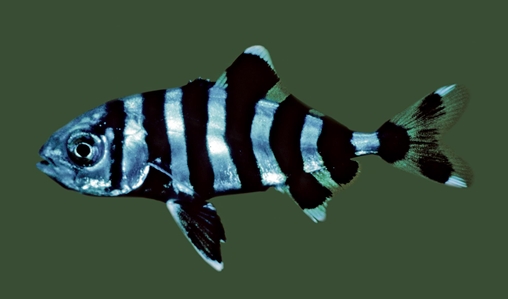General Description
Body elongate, barely compressed, with nearly symmetrical upper and lower profiles; tail base with a distinct mid-lateral fleshy keel and small dorsal and ventral grooves; first dorsal-fin spines very short and mostly unconnected by membranes in adults; lateral-line scales small, none modified as scutes. Blue above, pale greyish below with 5-6 broad darker bands, 3rd-6th band extending onto bases of dorsal and anal fins; tail dark with pale tips; pectoral and ventral fins yellowish. To 70 cm.
Biology
Pilotfishes accompany larger fishes, marine mammals and turtles, fishes feeding on discarded food scraps. They are also found beneath floating logs and drifting seaweed.
Habitat
Pelagic in tropical and subtropical seas, and often found close to shore.
Open water
Distribution guide
Worldwide.
Species Group
Fishes › Trevallies and allies
Depth
Water Column
Max Size
70 cm
Commercial Species
No
Global Dispersal
Recorded in Australia
Conservation Status
- DSE Advisory List : Not listed
- EPBC Act 1999 : Not listed
- IUCN Red List : Not listed





